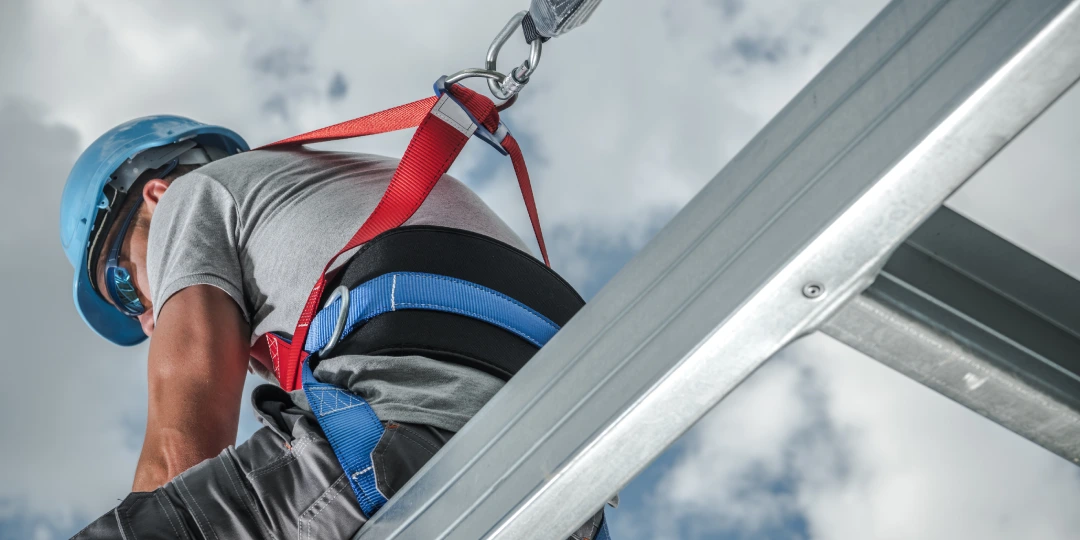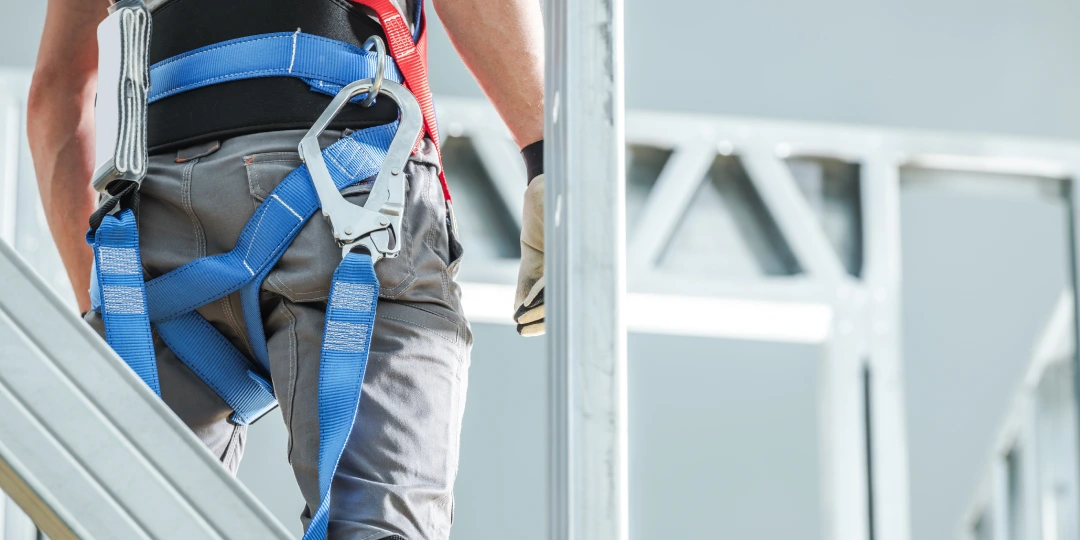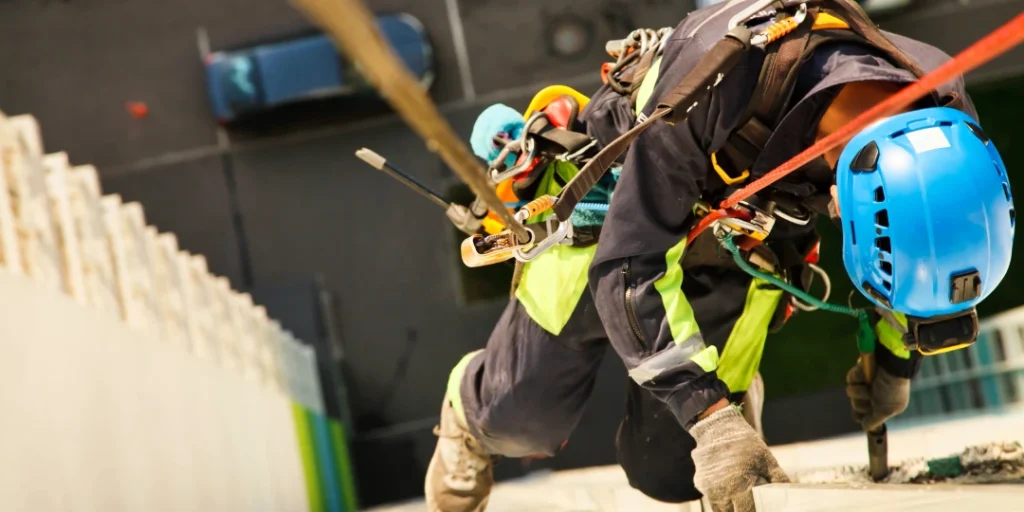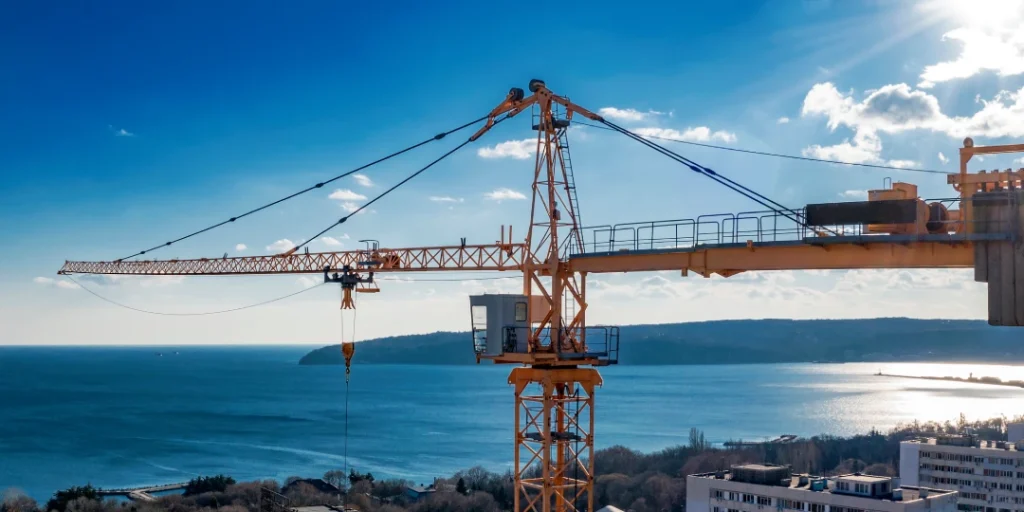Introduction: The Hidden Cost of Fall Hazards
Falls are among the leading causes of serious workplace injuries and fatalities, yet they are also among the most preventable. In industries such as construction, manufacturing, and logistics, even a minor oversight in fall protection can lead to devastating outcomes. Beyond the obvious human consequences—broken bones, head trauma, and even death—falls also bring hidden costs. These include escalating workers’ compensation claims, OSHA citations, delayed project timelines, and permanent damage to a company’s safety reputation.
The impact of a single fall can ripple throughout an entire organization. Productivity slows, morale plummets, and resources are diverted from growth initiatives to crisis management. Legal liability and negative publicity can erode stakeholder confidence. These consequences are not hypothetical—they are the real-world aftermath that companies face when fall protection is treated as an afterthought rather than a strategic priority.
At Fortier Loss Control, fall protection is approached with the gravity it deserves. The firm employs a multi-dimensional strategy that addresses risk from every angle—engineering controls, administrative measures, PPE implementation, and workforce education. Their proven process helps organizations proactively identify fall hazards and implement customized safeguards before an incident occurs. With Fortier, OSHA compliance is not merely a target—it is a natural outcome of intelligent planning, rigorous assessment, and a deep understanding of real-world site dynamics.
Understanding OSHA’s Fall Protection Standards
OSHA has long recognized the severity of fall-related incidents, which is why fall protection requirements are among the most comprehensive in federal safety legislation. Under 29 CFR 1926.501, construction employers must provide fall protection for employees working at elevations of six feet or more. In general industry settings, the threshold drops to four feet under 1910 Subpart D, reflecting OSHA’s recognition of the universal risks posed by working at height. These standards mandate a range of protections—guardrails, safety nets, personal fall arrest systems, and more—depending on the work environment and hazard exposure.
Yet achieving OSHA compliance is often easier said than done. While the regulations themselves are clearly written, their application in active work environments is complex. Factors such as surface stability, access pathways, frequency of elevation use, and proximity to edges can all influence what type of fall protection is appropriate. Furthermore, evolving site conditions and task variability demand ongoing reassessment. A fall protection plan that was effective last quarter may no longer meet compliance this quarter without timely updates.
Fortier Loss Control helps companies navigate this complexity with clarity and precision. Their specialists are fluent in OSHA regulations and possess deep field experience across diverse industries. They don’t just interpret the rules—they translate them into actionable strategies that align with operational workflows. By tailoring solutions to the unique conditions of each worksite, Fortier ensures fall protection is both OSHA-compliant and functionally effective. This dual focus is what sets Fortier apart as a true partner in workplace safety.
Why Compliance Isn’t Optional—It’s Foundational
Compliance with OSHA fall protection standards is not a luxury or a formality—it is a legal and ethical obligation. Violations of these regulations not only expose companies to steep financial penalties, but also to potential civil lawsuits, shutdown orders, and long-term reputational damage. OSHA’s penalties for serious fall protection violations can reach over $16,000 per instance, and willful or repeat violations can exceed six figures. However, these fines are only the tip of the iceberg when compared to the downstream costs of medical expenses, employee turnover, and operational disruption.
More importantly, fall protection compliance fosters a culture of responsibility and safety throughout an organization. Employees perform better when they know their well-being is prioritized. They are more likely to remain loyal, more willing to follow safety protocols, and more engaged in their daily tasks. On the other hand, a lack of visible safety practices can quickly erode trust, resulting in disengagement, higher injury rates, and a decline in overall performance.
Fortier Loss Control treats compliance not as a bureaucratic requirement, but as the structural foundation of operational excellence. Their approach reinforces the idea that OSHA compliance is not merely about avoiding fines—it’s about safeguarding people, preserving reputations, and maintaining workflow continuity. By integrating compliance into the core of their fall protection strategy, Fortier empowers organizations to lead with safety and operate with confidence.

The Fortier Philosophy: Proactive Loss Control
At the core of Fortier Loss Control’s approach is a proactive philosophy that seeks to eliminate risk before it escalates into a liability. Rather than waiting for an incident to prompt a response, Fortier implements forward-looking strategies that anticipate hazards and neutralize them at their origin. This mindset is rooted in predictive safety modeling, meticulous hazard evaluation, and a clear understanding of how fall risks emerge and evolve in dynamic work environments.
This philosophy distinguishes Fortier from conventional safety consultants. While others may offer template-based solutions, Fortier crafts bespoke fall protection plans that reflect the unique demands of each facility, workforce, and operational context. Their advisors are industry veterans with a hands-on understanding of jobsite realities—from high-rise construction and warehouse logistics to utility maintenance and industrial manufacturing. This grounded experience ensures that recommendations are not only OSHA-compliant but also operationally viable.
Proactive loss control is more than a safety objective—it’s a leadership strategy. By identifying vulnerabilities early and addressing them with precision, Fortier helps companies maintain business continuity, reduce claims frequency, and create safer, more efficient workspaces. It’s an approach that pays dividends in reduced costs, enhanced morale, and stronger regulatory relationships.
Site-Specific Hazard Assessments: Where Safety Starts
Every successful fall protection program begins with a rigorous, site-specific hazard assessment. This is the diagnostic phase—where Fortier Loss Control’s team inspects, evaluates, and documents every potential fall risk across the client’s operations. These assessments go far beyond basic visual inspections. They include risk mapping, behavioral observation, load path analysis, and environmental assessments that factor in elevation changes, surface types, access frequency, and task duration.
The goal of this assessment is twofold: to understand the full spectrum of fall exposures and to tailor interventions that are both effective and sustainable. For example, a rooftop maintenance platform may require fixed guardrails and permanent anchor points, while a loading dock might benefit more from visual edge indicators and procedural training. Fortier’s hazard assessments also account for seasonal factors, weather impact, and changes in site layout—all of which influence fall risk over time.
The deliverable from this process is not just a checklist—it is a comprehensive hazard profile, complete with actionable insights and compliance recommendations. This report becomes the foundation for all subsequent safety initiatives, from PPE selection to training rollout. It also serves as a living document, updated periodically to reflect changes in operations or worksite conditions. At Fortier, the hazard assessment isn’t the end of the process—it’s the intelligent beginning.
Engineering Out the Risk: Structural Solutions First
According to OSHA’s Hierarchy of Controls, the most effective way to reduce risk is to eliminate the hazard entirely—something best accomplished through engineering controls. Fortier Loss Control prioritizes this strategy in every fall protection plan. Instead of relying solely on behavioral interventions or protective gear, Fortier advocates for redesigning the environment to make hazardous situations less likely to occur in the first place.
Structural interventions might include the installation of guardrails, toe boards, or permanent anchor points on elevated platforms. For rooftops and mezzanines, Fortier often recommends non-penetrating rail systems that offer both safety and structural preservation. In industrial settings, this might involve reconfiguring walkways or adding protective barriers to reduce proximity to drop zones. These engineered solutions provide passive protection—requiring no action from the worker—and dramatically reduce the margin for error.
Working closely with facility managers, architects, and safety engineers, Fortier ensures that each engineered control is not only OSHA-compliant but also aligned with the functional needs of the business. Unlike temporary fixes or add-on solutions, these structural enhancements are built to last and seamlessly integrate with day-to-day operations. The result is a physical environment that does much of the fall prevention work by design—lessening the burden on the workforce while enhancing long-term compliance.

Administrative Controls and Training: Empowering the Workforce
While structural modifications form a solid foundation, fall protection must also be reinforced with administrative controls and robust employee training. Administrative measures include policies, schedules, signage, procedural checklists, and supervision protocols that govern how work is performed at height. These tools help mitigate risks when engineering controls cannot eliminate them entirely and ensure consistent behavior across teams and shifts.
Fortier Loss Control designs tailored administrative protocols that reflect each organization’s unique risk profile. These may include work-permit systems for elevated tasks, mandatory inspection routines for ladders and platforms, or job hazard analyses (JHAs) required before commencing high-risk activities. These controls institutionalize safe practices and support accountability at every level of the organization—from frontline workers to site supervisors.
Equally critical is employee training. Fortier delivers hands-on, OSHA-aligned fall protection training that goes beyond theoretical instruction. Workers are taught to properly don and inspect harnesses, identify hidden hazards, respond to emergencies, and make sound decisions in real-time scenarios. Training programs can be customized by job role and are often reinforced with ongoing refresher courses and on-site demonstrations. By turning every employee into an active participant in fall prevention, Fortier empowers teams to be both compliant and vigilant.
Personal Protective Equipment (PPE): The Final Line of Defense
When other controls cannot fully eliminate fall risk, Personal Protective Equipment (PPE) becomes the final—and often most visible—layer of defense. Fortier Loss Control ensures that PPE is used effectively and appropriately, matching the right gear to the right task and educating users on correct application. Properly deployed, PPE can mean the difference between a near-miss and a life-altering injury.
PPE for fall protection typically includes full-body harnesses, shock-absorbing lanyards, self-retracting lifelines, anchorage connectors, and vertical lifeline systems. Fortier works with leading safety equipment manufacturers to recommend gear that meets ANSI and OSHA standards while suiting the environmental and operational demands of each site. More importantly, they ensure this gear is fit-tested, regularly inspected, and used correctly every time.
To combat the widespread issue of PPE misuse, Fortier embeds education into every implementation. Workers are trained not just in use, but in understanding why specific gear is required and how it functions during a fall event. Supervisors are equipped with checklists and visual guides for daily inspections, and safety coordinators receive best practices for equipment rotation and maintenance. PPE is treated not as a generic compliance tool, but as a critical component of a larger, integrated fall protection ecosystem.
The ROI of a Safe Work Environment
Investing in fall protection yields tangible and quantifiable returns. From a financial perspective, companies that reduce injuries also reduce downtime, medical expenses, insurance premiums, and legal exposure. These savings often offset the initial cost of safety infrastructure, making fall protection not just a compliance measure, but a high-yield investment. Fortier Loss Control helps companies evaluate and communicate this return on investment (ROI), making the business case for safety clear to executive teams and stakeholders.
Beyond cost reduction, there are reputational and operational advantages. A strong safety record improves an organization’s standing with clients, vendors, insurers, and regulators. It can also influence contract awards, especially in sectors where safety metrics are a determining factor. Internally, a safe environment fosters employee trust, improves morale, and contributes to better retention—benefits that are especially critical in industries facing labor shortages.
With Fortier’s comprehensive fall protection strategy, clients gain more than OSHA compliance. They secure a competitive edge, strengthen organizational culture, and build the framework for sustainable operational excellence. In the long run, safety isn’t just the right thing to do—it’s one of the smartest investments a business can make.
Documentation, Audits, and Continuous Improvement
Effective fall protection doesn’t end with equipment installation or a single round of training. Ongoing documentation and auditing are critical to maintaining compliance, identifying new risks, and ensuring continuous improvement. Fortier Loss Control emphasizes a robust documentation process that captures every facet of a fall protection program—from initial hazard assessments and training logs to equipment inspections and corrective actions.
This documentation not only serves as proof of OSHA compliance but also protects the organization in the event of an incident or legal investigation. It provides a traceable history of safety decisions, risk mitigation efforts, and personnel education. Fortier helps clients develop and manage this documentation in a format that is organized, accessible, and aligned with both internal policies and regulatory expectations.
Regular audits are conducted as part of Fortier’s ongoing support model. These safety audits examine all aspects of the fall protection program, verifying that controls remain effective and that protocols are being followed consistently. Audit findings are used to identify weaknesses, track improvements, and recalibrate safety strategies as operations evolve. This feedback loop ensures that fall protection efforts are not static, but evolve in response to new challenges and best practices—making safety a living, adaptive function within the organization.

Frequently Asked Questions

Conclusion: Partnering with Fortier for a Safer Future
Falls are preventable, yet they remain a leading cause of injury and death across multiple sectors. For companies committed to operational excellence, fall protection must be more than an afterthought—it must be a central pillar of workplace safety. Through its proven, multi-layered approach, Fortier Loss Control equips organizations with the tools, knowledge, and systems to eliminate guesswork and implement lasting, OSHA-compliant solutions.
Fortier’s fall protection model doesn’t rely on quick fixes or one-size-fits-all tactics. Instead, it’s rooted in real-world experience, precision assessments, engineered controls, and behavior-based training—all reinforced with rigorous documentation and continuous improvement. This holistic strategy ensures that every level of an organization, from leadership to frontline workers, is aligned under a shared commitment to safety.
As regulatory scrutiny intensifies and operational risks grow more complex, companies can no longer afford to rely on outdated or partial safety measures. Fortier offers a partnership—not just a service. One that evolves with your business, protects your workforce, and transforms compliance from a challenge into a strength. With Fortier Loss Control, fall protection becomes what it should be: proactive, practical, and proven.



